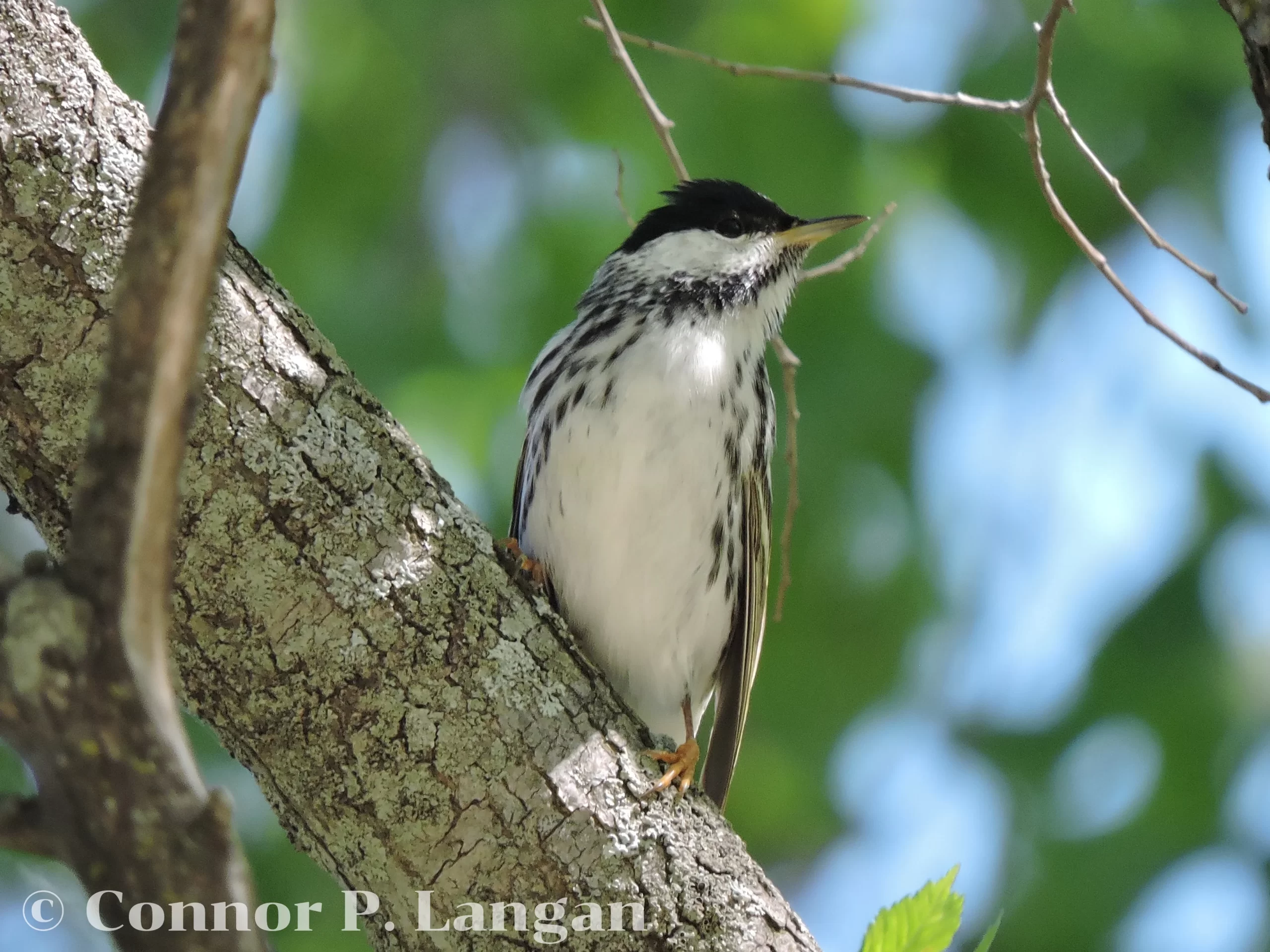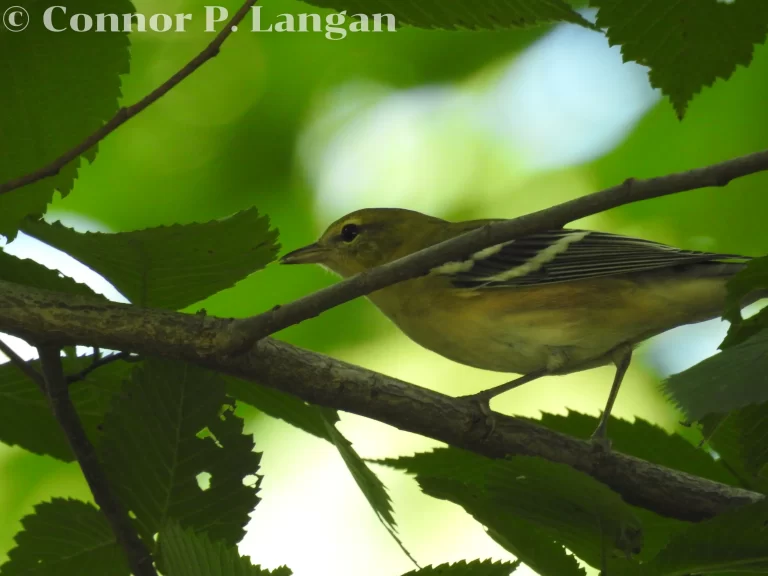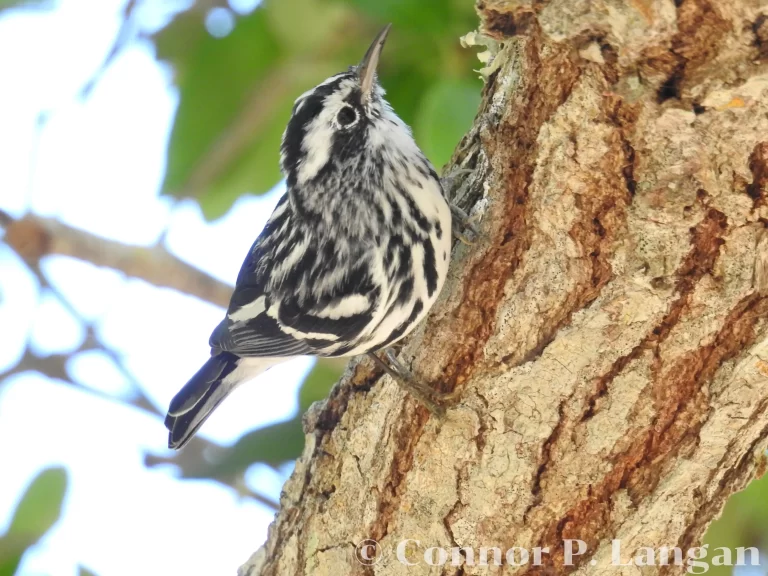Description
A Blackpoll Warbler is a large warbler with a small bill and short tail.
This species measures 5.5 inches long, while most Blackpoll Warblers weigh around 0.5 ounces.
Male and female Blackpoll Warblers are sexually dimorphic, but they share orange feet and dark wings with white wingbars.
Female Blackpoll Warblers have pale, unmarked undersides, dark eyes on an unmarked face, and streaked gray backs.
Breeding male Blackpoll Warblers have black caps, white cheeks, white undersides with black streaking, and dark, streaked backs.
Nonbreeding birds have a green wash to their breasts, green-brown supercilia, and subtle streaks on their undersides.
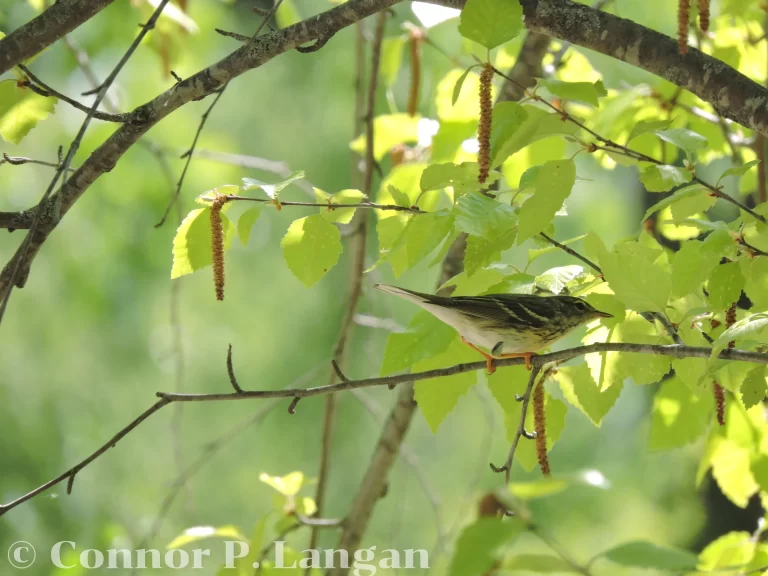
Female
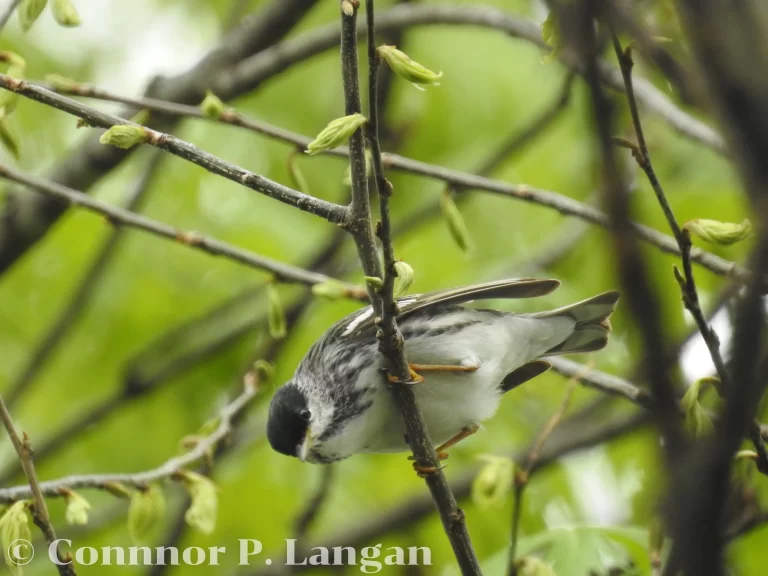
Male
Behavior
Blackpoll Warblers demonstrate a slow-going foraging behavior in which they methodically forage in trees.
This species associates with its family unit during the breeding season, but they will otherwise keep to themselves. They forage in groups with other birds during migration and winter.
Male Blackpoll Warblers sing persistently on their breeding grounds from the tree canopy.
Blackpoll Warbler Diet
Blackpoll Warblers consume various insect species throughout the year. They indiscriminately consume these creatures as they forage in trees. Additionally, they are known to eat several types of berries on fall migration.
Habitat
Blackpoll Warblers rely on extensive boreal forests during the breeding season. They prefer breeding in spruce, firs, and tamaracks, but they will also breed in thickets of deciduous trees such as alder.
This species is not as selective during migration and winter. They may stop over in parks, woodlots, shelterbelts, and other forested locales during migration. They select edges of mature forests and interiors of younger forests during the winter.
Blackpoll Warbler Range
Blackpoll Warblers breed almost exclusively in Canada, though small numbers breed in the Northeastern United States. They spend the winter in South America, occurring as far south as Peru.
Breeding
Male Blackpoll Warblers arrive on the breeding grounds a tad earlier than females. Females pair with a male once they arrive.
Though this species is typically monogamous, males are known to breed with multiple females in some cases.
Females select a nesting location by themselves. The females build the nest without assistance from a male. Males closely observe females as they build the nest, but they do not provide any help with nest construction.
A cup-shaped nest is constructed near a tree’s trunk. It may be situated just off the ground or dozens of feet above. Nests are built using small branches and lichens, with few grasses or leaves being used.
Females produce one to two broods are produced every year, with up to 5 eggs being laid in each clutch. Eggs are
incubated for about 12 days, and nestlings leave the nest as soon as 8 days later.
Backyard Birding
Blackpoll Warblers are an uncommon sight in backyards given that they do not nest in birdhouses or feed from bird feeders.
Yards with trees of various sizes offer a good chance of attracting Blackpoll Warblers.
Blackpoll Warbler Population Status
Blackpoll Warbler populations have been decimated in the past half-century, with some studies suggesting that they’ve lost almost three-quarters of their total population. Despite suffering these tremendous losses, Blackpoll Warblers still have a global population in excess of 50 million birds thanks to their massive range.
The precise reasons for Blackpoll Warbler declines are not known, but habitat loss and fragmentation are surely playing a role in their demise. Populations of Blackpoll Warblers will need to be closely monitored throughout the coming years to monitor population trends.

